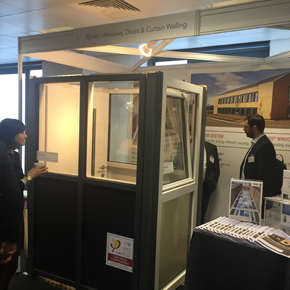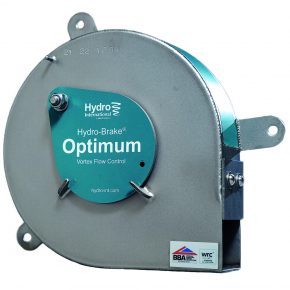
Lots of questions at the Passivhaus conference
Malcolm Taylor, Product Manager at REHAU answers questions posed at last weeks Passivhaus conference at the Business Design centre in Islington.
 Last week, REHAU exhibited at the Passivhaus conference at the Business Design Centre in Islington and once again it was very encouraging to see such a good turnout.
Last week, REHAU exhibited at the Passivhaus conference at the Business Design Centre in Islington and once again it was very encouraging to see such a good turnout.
I would estimate that close to 350 architects and specifiers were at the event and certainly the Masterclass event I attended on the day before the main conference, on the new Passivhaus Plus and Passivhaus Premium classifications, was sold out well in advance.
What this revealed was that the traditional Passivhaus as most of us understand it is now to be classified as Passivhaus Classic.
Added to this are Passivhaus Plus in which the building generates as much energy as residents consume (for example via photovoltaics) and Passivhaus Premium which generates additional energy which can either be stored for future use or sold back to the grid.
There’s lots of work still to be done on refining the requirements for these classifications and I’ll be covering this in a future post.
From our point of view, there were lots of visitors coming to our stand at the conference to look at the windows, doors and curtain walling sections we were showing.
Interestingly, there were some general questions from visitors which came up time and again, so I thought this might be a good place to answer them.
In terms of windows, architects wanted to know why the choice is generally restricted to tilt and turn options.
This is largely just because these window systems come from Germany, where Passivhaus was born and where tilt and turn is the equivalent of our casement.
Fundamentally though, they have become popular in the UK and proved a better solution for Passivhaus installations because they incorporate locking points all the way round the frame, which means it is possible to get a better and more reliable airtight seal than would be possible with a casement window where the locking points are just on the sash.
Another common question was ‘why do the PVC-U windows have bigger sightlines than timber?’ and the answer to that one is that in Passivhaus technologies, they generally don’t.
There are now Passivhaus approved aluminium clad PVC-U composite windows available with sightlines which are even slimmer than aluminium clad timber.
The market has moved on and recognised that aesthetics are almost as important as performance – that’s also the reason of course why manufacturers now offer such a wide range of colours and finishes in PVC-U and composite materials.
The days of the white PVC-U window have long gone.
Contact:
REHAU
Hill Court,
Walford,
Ross on Wye,
Herefordshire,
HR9 5QN
Email address: [email protected]
Tel: 01989 72600
Visit Supplier's page
Latest news

1st May 2024
Easy transportation with Makita’s DCU601 36V LXT
Power tool manufacturer Makita has added a new battery powered wheelbarrow to its extensive LXT outdoor power equipment range.
Posted in Articles, Building Industry News, Building Products & Structures, Garden, Hand Tools, Innovations & New Products, Plant, Equipment and Hire, Power Tools, Restoration & Refurbishment, Retrofit & Renovation, Site Preparation
1st May 2024
Hydro International incorporates future-proof design for Hydro-Brake® Optimum
Hydro International, an industry leader in water management products and services, is redefining the standard for hydraulic efficiency and adjustability.
Posted in Articles, Building Industry News, Building Products & Structures, Building Regulations & Accreditations, Building Services, Drainage, Drainage Services, Drainage, Guttering, Soffits & Fascias, Facility Management & Building Services, Information Technology, Innovations & New Products, Plumbing, Retrofit & Renovation, Sustainability & Energy Efficiency
30th April 2024
ASSA ABLOY Door Group strengthens offering with partnership
ASSA ABLOY Door Group is proud to announce a new internal restructure that sees the company joining forces with all comparable business units across Europe, the Middle East, India and Africa, to form a new global division – the ASSA ABLOY EMEIA Door Business Segment.
Posted in Access Control & Door Entry Systems, Architectural Ironmongery, Articles, Building Associations & Institutes, Building Industry News, Building Products & Structures, Building Services, Doors, Facility Management & Building Services, Restoration & Refurbishment, Retrofit & Renovation, Security and Fire Protection
30th April 2024
Geberit exhibiting at British Pig & Poultry Fair 2024
Bathroom and piping manufacturer Geberit will be exhibiting at the British Pig & Poultry Fair at NEC Birmingham (15 – 16 May 2024).
Posted in Articles, Building Industry Events, Building Industry News, Building Products & Structures, Building Services, Exhibitions and Conferences, Facility Management & Building Services, Innovations & New Products, Pipes, Pipes & Fittings, Plumbing, Retrofit & Renovation
 Sign up:
Sign up: